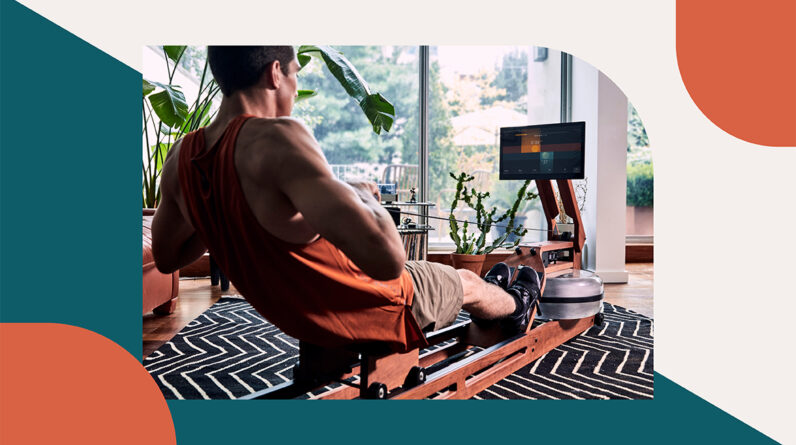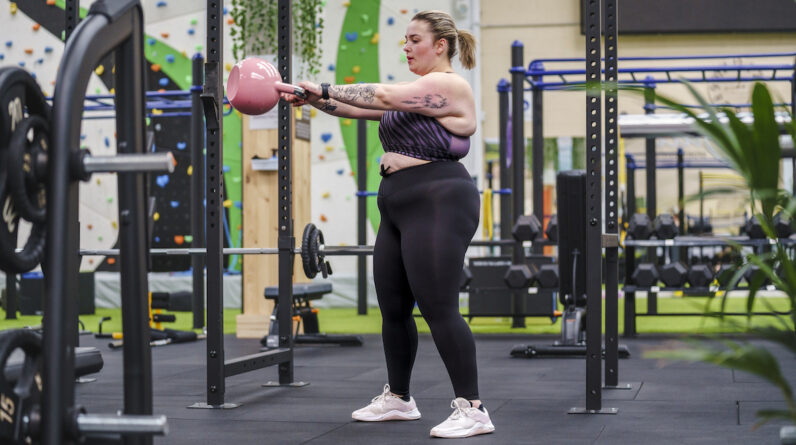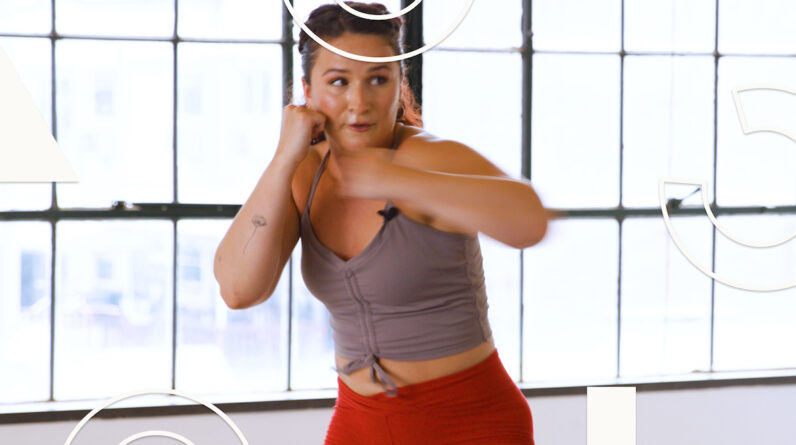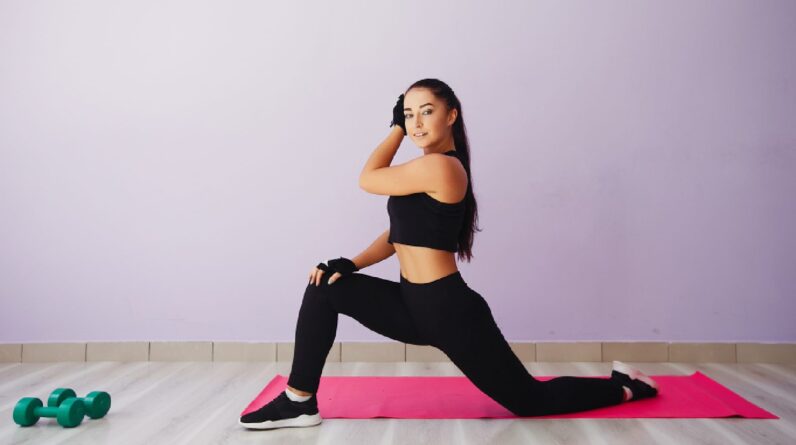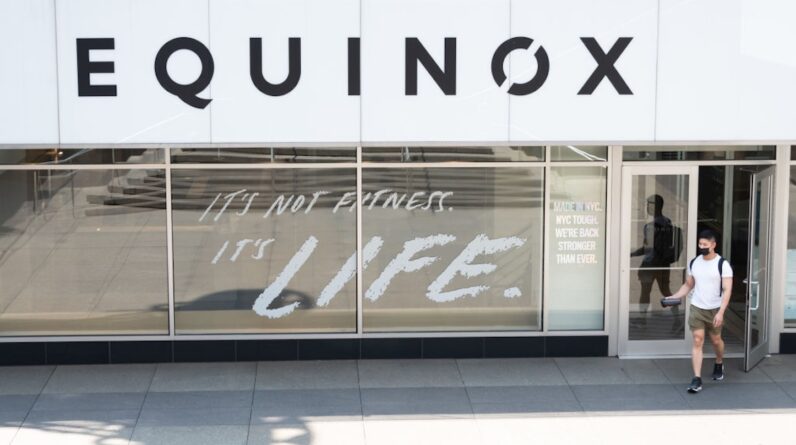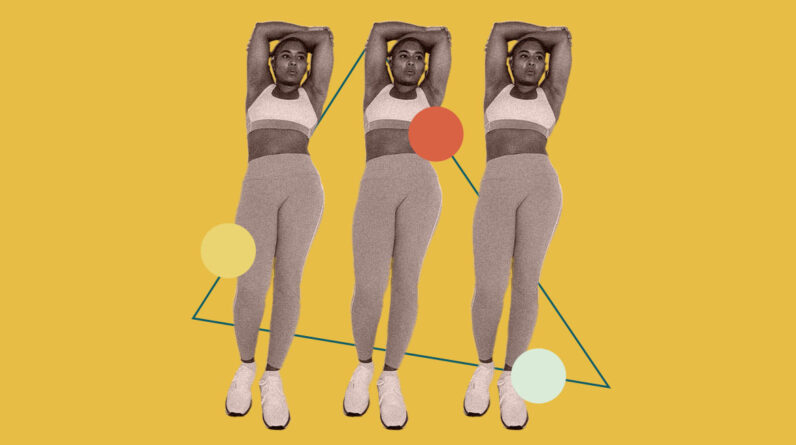
Showing up to any social event—a wedding, work happy hour, or Sunday brunch—wearing the exact same thing as someone else is typically considered a faux pas.
But attend any Pure Barre class on a weekday afternoon, and odds are you’ll find a handful of middle-aged women sporting the same Lululemon top. Drop by a reformer Pilates class on a Saturday morning, and many of the Gen Z urbanites present will probably be wearing the same Alo Yoga set that they’ll also wear to brunch afterwards. And depending on which of your local run clubs you show up to on any given evening, you might see a sea of Tracksmith jackets, or a bunch of Bandit shorts.
Experts In This Article
- Ash Modha, CEO of activewear company MPG
- Daniela Celi, instructor at Barry’s in New York City
- Dylan Davies, co-founder of Lift Society
- Julia Mangelsdorf, fit and technical designer at running brand Oiselle
- Kyla Maher, founder of Bozeman Run Club and content producer at running brand Janji
- Natalia Mehlman Petrzela, PhD, associate professor of history at The New School and author of Fit Nation
- Shakaila Forbes-Bell, MA, Shakaila Forbes-Bell, MA, is a fashion psychologist and the founder of Fashion In Psychology. In 2016, Forbes-Bell became the first black person in the world to earn a master’s degree in fashion psychology.
It’s true that we have fewer options when getting dressed for a workout than we do for many other activities. We need clothing that’s functional for our exercise of choice, and though the activewear industry has exploded in the past decade, there are still fewer brands to choose from than when shopping for attire to wear to the office or a night out.
But that doesn’t explain why we don’t just tend to dress like the people we work out with. We tend to like it, taking pride in the fact that we appear to be in uniform while running, squatting, lifting, or pulsing next to complete strangers, close friends, or workout buddies who are somewhere in between.
There will always be those who ignore or resist activewear trends (looking at you, that one man at every gym who wears jeans), and those who activewear trends do not serve (due to financial barriers, or limited sizing options, for instance). But for many of us, getting dressed to work out is far less individual than getting dressed for the rest of our lives.
Connecting through clothing
The truth is, we subconsciously wear “uniforms” in nearly every social setting we enter—not just inside the gym. “Humans are social creatures, so we use clothes as a way to communicate belonging,” says Shakaila Forbes-Bell, author of Big Dress Energy: How Fashion Psychology Can Transform Your Wardrobe And Your Confidence. You can see this in the ways that groups of friends often dress similarly (cue The Sisterhood of the Traveling Pants) or how different offices might have different unspoken dress codes. (Like how nurses tend to gravitate toward Hokas or Danskos for their long shifts.) “It has positive consequences, especially when there are people we want to connect with, or people who are in higher positions,” she says.
The (subconscious) idea, says Forbes-Bell, is to dress similarly enough to others to follow any implied dress code and to appear as part of the “in-group,” but not so similarly that you’re overtly copying someone else. “It’s a balancing act,” she says. “We love dress codes, because they can give us a framework of how to be. But then when we turn up dressed exactly the same as someone else, we feel we’ve tipped the scales too far. We want to be similar, but we also want to be unique.”
The same goes for when we’re dressing for workouts, though we often err more on the side of similar. “People like to get into a certain frame of mind when they’re working out,” says Forbes-Bell. “Dressing similarly to others helps them step into that part of themselves, which is slightly different from themselves at work or just hanging out. Uniforms allow us to step into different parts of our identity.”
“A lot of fitness brands and fitness communities today are very much selling not only the exercise programming that they offer, but a form of community, and clothes become part of that.” —Natalia Mehlman Petrzela, PhD, associate professor of history, The New School
This phenomenon has become more common over the years as gyms, fitness studios, and workout groups have become increasingly social spaces central to our lives. “A lot of fitness brands and fitness communities today are very much selling not only the exercise programming that they offer, but a form of community, and clothes become part of that,” says Natalia Mehlman Petrzela, PhD, an associate professor of history at The New School and author of Fit Nation: The Gains and Pains of America’s Exercise Obsession. “It’s not so much that people are like, ‘I want to look like everybody else,’ but more like, ‘I want to look like the people in this particular community—wearing a shirt that says Peloton, or something with a Barry’s logo.’ That might seem like the ultimate conformist move, but I think it’s to distinguish yourself from the broader community.”
It’s less that we’re erasing our identities by dressing like others, then, but attempting to define who we are and what we aspire to be. “It does make you feel like you’re a part of something,” says Daniela Celi, a Barry’s instructor in New York City. “It symbolizes community, camaraderie, loyalty, togetherness.”
Part of why our clothes can be so key to making us feel like we “belong” is because they are so central to how others perceive us. “If we have vision, that’s a big part of what we take in about people,” says sports psychologist Emily Saul, LMHC. “Without having any conversation, without knowing any details about a person, we go, ‘Well, they look like that.’ And when you go into a yoga class, there’s not a lot of conversation. So all you’re using to make sense of the people around you is where they sit in the room, what they’re wearing, and how good they are at yoga.”
Knowing “the right” way to dress can also signal competence in a way that can help those new to a workout feel like they fit in. Kyla Maher, a content producer at the running brand Janji, was an avid runner when she moved to Bozeman, Montana, a few years ago But she didn’t have much experience with trail running, which is popular in the area. “I was looking to see what everyone else was wearing,” she says. “I was like, ‘I want to fit in with these people, and I want them to like me, and I want to look legit.’”
Now, since founding the Bozeman Run Club (which is sponsored by Janji), Maher sees a similar pattern happen weekly. “New people come in and they’re shy,” she says. “They don’t have any of the gear…And the next time they come they’re in a running vest and they’re fully decked out.”
Clothes can signal competence in more obvious ways, too: The finisher shirt from the recent local marathon; the merch proving you survived Orangetheory’s Hell Week; the not-so-subtle brag of wearing apparel from a far-flung Barry’s location.
The fact that gyms can be vulnerable, intimidating spaces makes the stakes of feeling like one “fits in” all the higher. “The gym is still a place where a lot of people don’t necessarily feel like they want to stand out because they’re nervous about their performance, or they don’t want to draw attention to their body or themselves,” says Petrzela.
The role of functionality in the workout uniform
Sometimes our workout uniforms can easily be explained by functionality. At Lift Society in Los Angeles, for instance, nearly everyone wears Vans or Converse, says co-founder Dylan Davies. That’s because those brands are best for lifting weights, since their flat soles provide the most stability and energy transfer from the ground.
Of course, it benefits athletic wear brands to convince us that each of our fitness pursuits requires a different, specific set of outfits—that means they sell us more clothes. While there are times when do need some different gear for different modalities (like wearing a more supportive bra for running than for yoga), the idea that different activities truly need entirely different wardrobes is a bit extreme.
“It’s easy to dismiss the [fitness] clothing industry as just trying to sell us more stuff, when actually, much of it serves a need,” says Petrzela. “At the same time, capitalism is voracious and will stop at nothing, especially because people are desperate to get the thing that will turn them into the person that actually goes to the gym. So we see so much advertising that makes us think we need a different pair of pants for Barry’s class and for yoga class and for an outdoor jog. And there’s a little bit of truth to that, but at some of the fittest moments of my life, I was wearing the same mesh shorts to do everything.”
“Humans are social creatures, so we use clothes as a way to communicate belonging.” —Shakaila Forbes-Bell, author
Still, functionality is more central to our workout apparel choices than to our choices around most of our other clothing. You research the right kind of running shoe for your high arches; you look for form-fitting, stretchy clothing that moves with you during yoga; you hunt for workout shorts that don’t ride up or cause chafing. That could be one reason why we’re more likely to dress like our friends—we care about how the clothes perform more than how they look, and we rely on endorsements from trusted workout buddies.
“Social influence is how you learn how comfortable those shorts are to move in, how they perform during a long workout, and what features set them apart from another pair of shorts,” says Julia Mangelsdorf, fit and technical designer at running brand Oiselle.
But Ash Modha, CEO of activewear company MPG, thinks we shouldn’t overstate the role of function in how we dress to workout. He says that since the athletic wear industry has grown so much and become so competitive, making functional products is now a given. (He thinks basic demographics are the best explanation for the workout uniform phenomenon—people of the same age group and economic status tend to work out in the same spaces and buy the same clothes.) “In our business, that’s table stakes,” he says. “You have to have that in your product in order for people to even buy it.”
Workout clothes as aspiration
Fitness spaces are inherently aspirational—most of us work out to get stronger, fitter, healthier, faster. And just like we might dress for the job we want, many of us are subconsciously dressing to be the fit person we want to be, whether that means mimicking the styles of those around us or the influencers we see on social media.
The idea that we might embody the meanings we ascribe to clothes is known as enclothed cognition. “For example, you may have a specific idea of a woman who wears Gymshark, and see them as someone who is committed to their workout goals, who works super hard,” says Forbes-Bell. “When you wear those clothes, it puts you in the mindframe of, ‘I’m a Gymshark girl, so I must be like this. I must work harder, I must put in the effort and I must enjoy it’. It essentially changes your behavior.”
Fitness brands carefully craft these images of what their clothes represent, and who the ideal version of their customer is. “[Companies] don’t sell clothes, they sell ideas, they sell lifestyles,” says Forbes-Bell. “They’re selling the idea that wearing this can help you connect with other people, and be the fittest version of yourself.” (It must be said that this is problematic if the clothes are only designed for certain body types, further cementing the messaging that fitness looks a specific way.)
“When you wear clothing that supports you, that fits you, that allows you to feel good, that offers a sense of confidence, and then it’s much easier to authentically connect with other people in the service of belonging.” —Emily Saul, LHMC
It makes sense that people working out together might dress similarly to the person they aspire to be. That may be a literal person—like the super-strong barre instructor always wearing cool Girlfriend Collective sets, or the leader of the run club who has a brand partnership with Hoka—or more of an abstract set of attributes. Modha says MPG has found lots of success at studios where the instructors are already wearing the brand. And though Janji does sponsor Maher’s run club with a 15 percent discount code for members, her group has bought so much of the brand’s product that the small city of Bozeman has become one of Janji’s top markets per capita.
Of course, your clothes can’t actually make you faster, or stronger, or change who you are. “People say, ‘I want to be like that person, or perform like that person, so I’m going to get the clothes they wear, and that’ll get me there,’” says Saul. “Except there’s something missing in terms of the sense of belief about themselves. It isn’t the clothes you wear that makes you a fast runner, or a good runner, or a worthy runner—it’s the characteristics you bring to that effort as a runner.”
When wearing a “workout uniform” doesn’t feel good
Though wearing Janji can help new members of the Bozeman Run Club feel like they fit in, Maher is intentional about showing all kinds of people wearing all kinds of outfits on the group’s Instagram, so that not owning the right clothes doesn’t feel like a barrier for anyone.
Because it easily could. Athletic wear is often expensive, providing a significant barrier to looking the part for people who can’t afford to buy $90 Lululemon leggings. The athletic wear industry is also plagued with size inclusivity issues despite increased demand for products made for larger bodies. (Plus-size options are often sold online only, and many brands max out at size 3X—with some exceptions, like Girlfriend Collective and Superfit Hero.) These accessibility issues reflect larger, stubborn issues that plague the fitness and wellness industries at large: namely, that fitness looks a certain way and is for a certain kind of person.
For some, the “uniform” in a given workout setting may just not feel right on their body, or align with their personal taste and style, which could lead them to feeling like they don’t belong in that group. As much as it may foster connection for some, the “workout uniform” can just as easily foster exclusion.
Perhaps it’s obvious, but it’s worth stating: Any fitness group where there’s real pressure to dress the same as everyone else, or social consequences for not doing so, is not a group that’s worth your time. “Relationships are formed much more by interpersonal connections and conversations than just by wearing the same thing,” says Saul. “And when you wear clothing that supports you, that fits you, that allows you to feel good, that offers a sense of confidence and then it’s much easier to authentically connect with other people in the service of belonging.”


